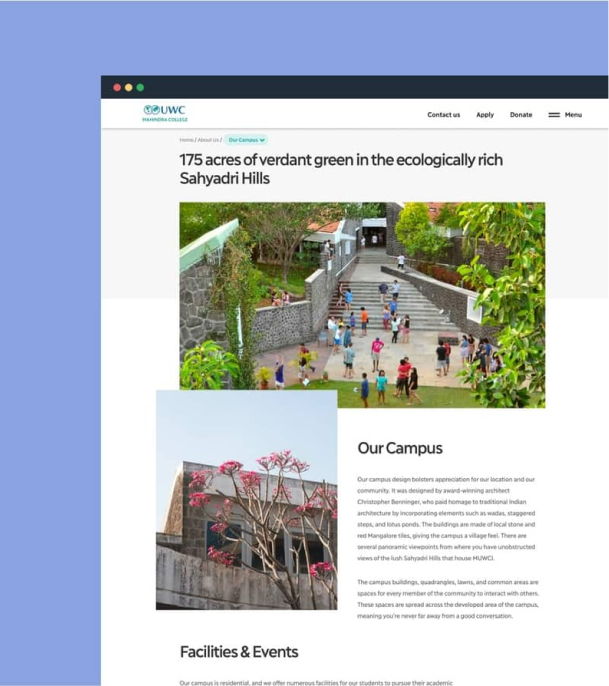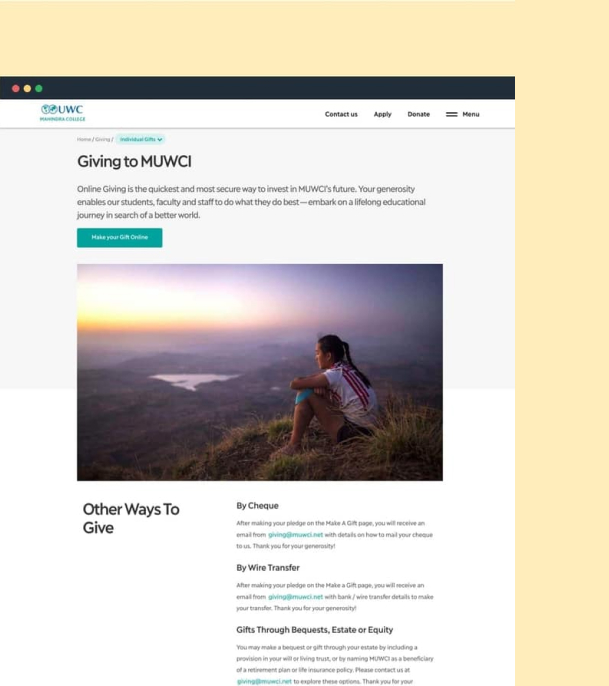What We Did
About the Client
UWC Mahindra College (MUWCI), a two-year residential International Baccalaureate (IB) school located in the Mulshi Valley, Pune, India, is part of the global United World Colleges movement. Known for its immersive educational experience, MUWCI combines academic rigour with grassroots-level learning, encouraging students to engage with their surroundings and address the challenges of developing nations.
Position MUWCI as a top destination for Indian and international prospective students.
Create awareness about MUWCI and improve the admissions rate.
Attract potential donors and give them a complete overview of MUWCI.
Make the donation process easy.
We developed a great partnership with Bokaap Design over the course of designing our website! They frequently challenged and simplified our ideas using crucial insights gained from experience, and they’ve helped create a highly functional yet beautiful website that does justice to our school.
Ninad Adawadkar, Former Communications Manager
Brand Positioning
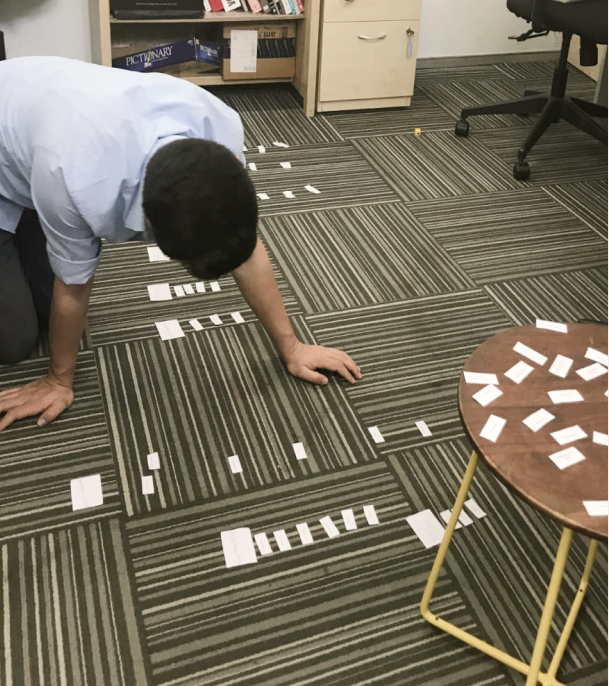
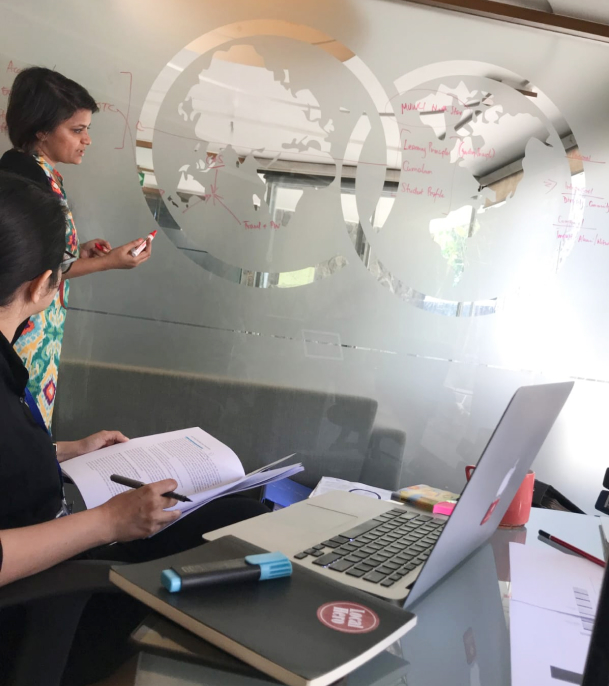
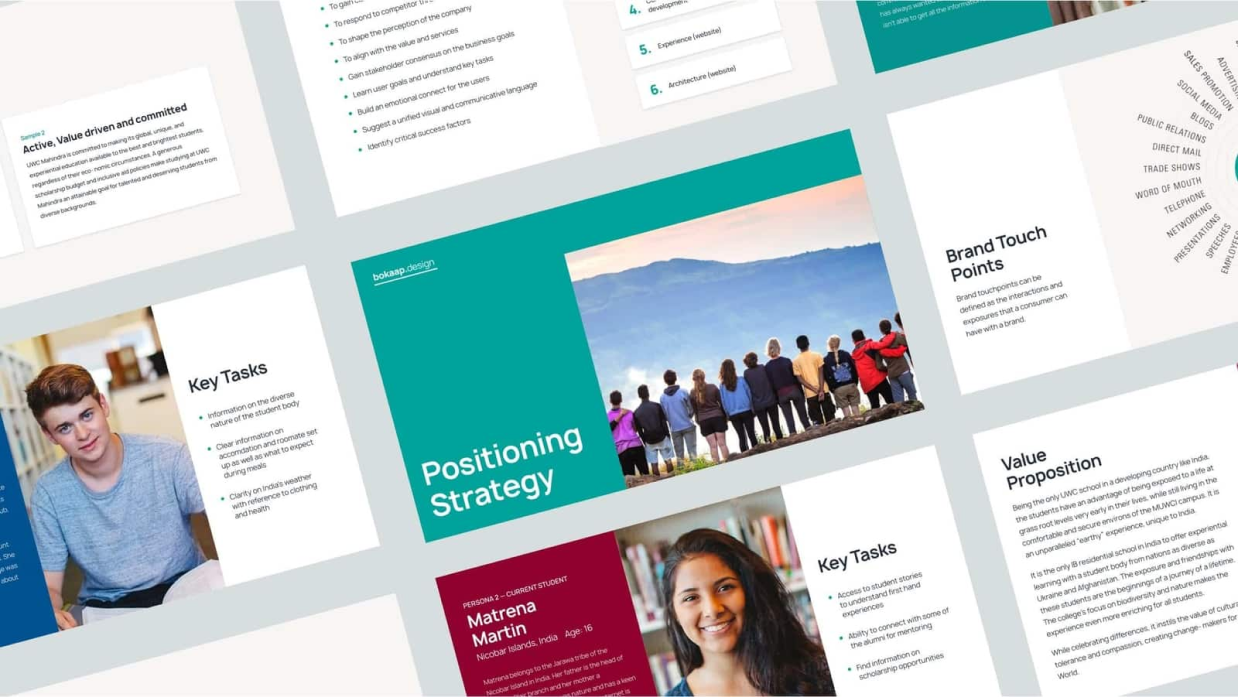
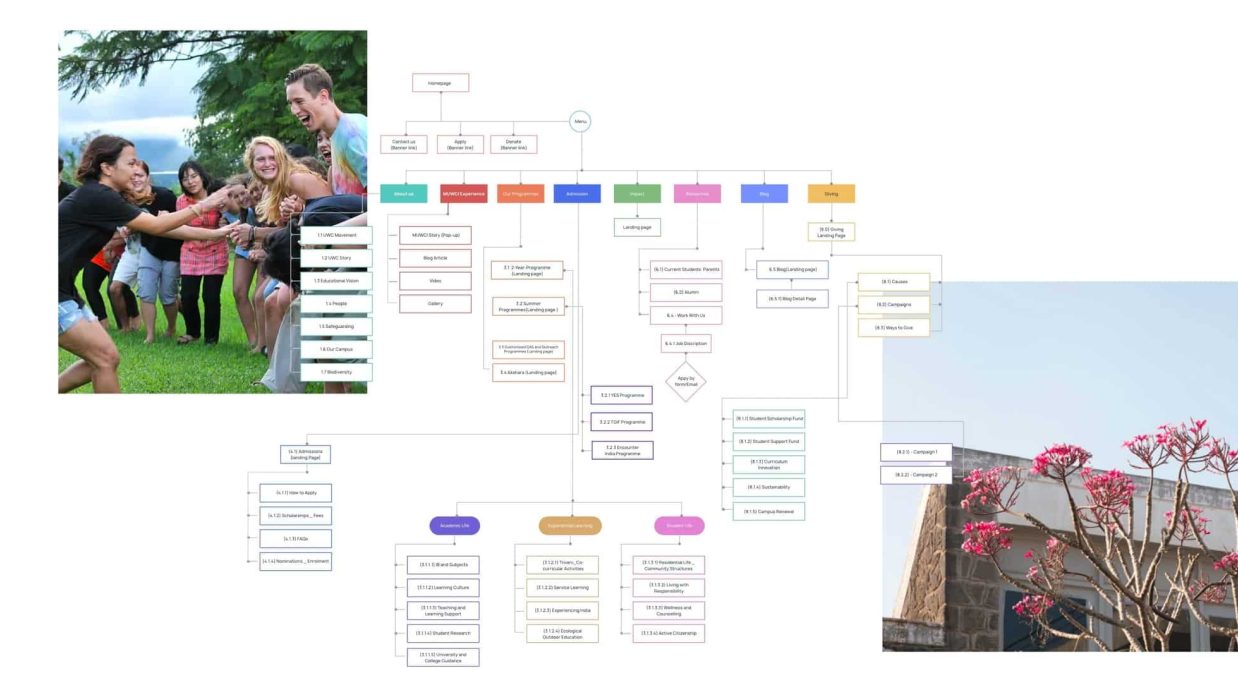
Creating the MUWCI Experience
Design Strategy
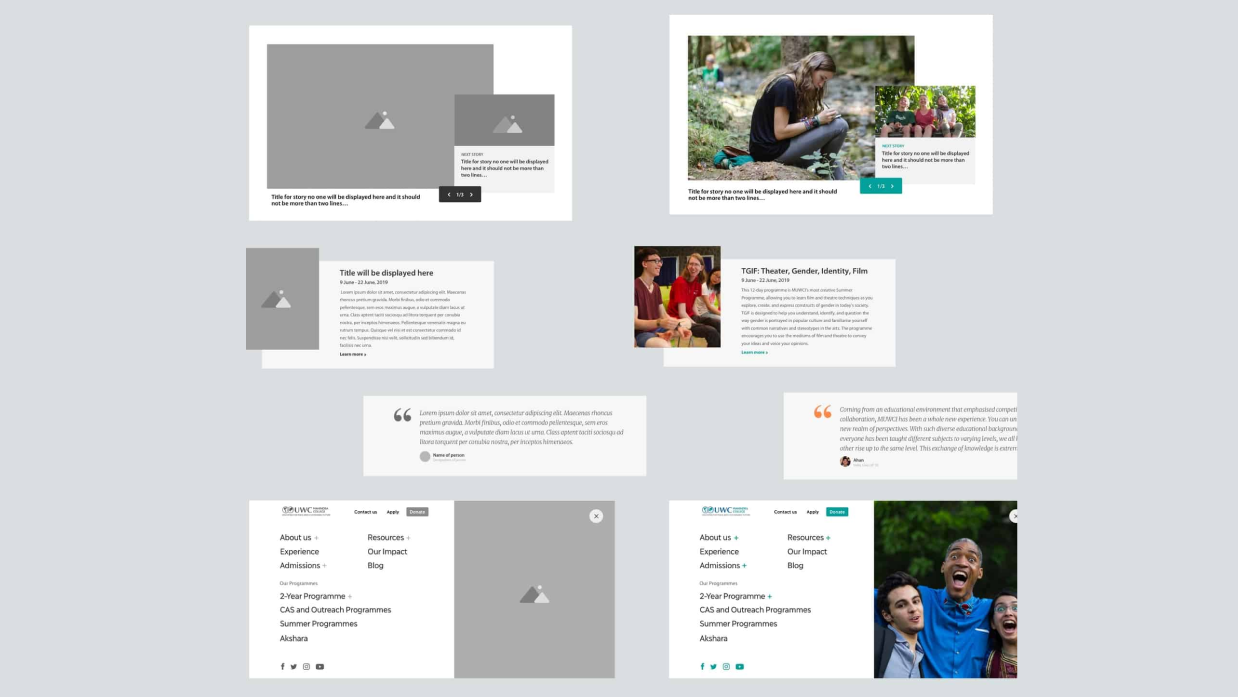
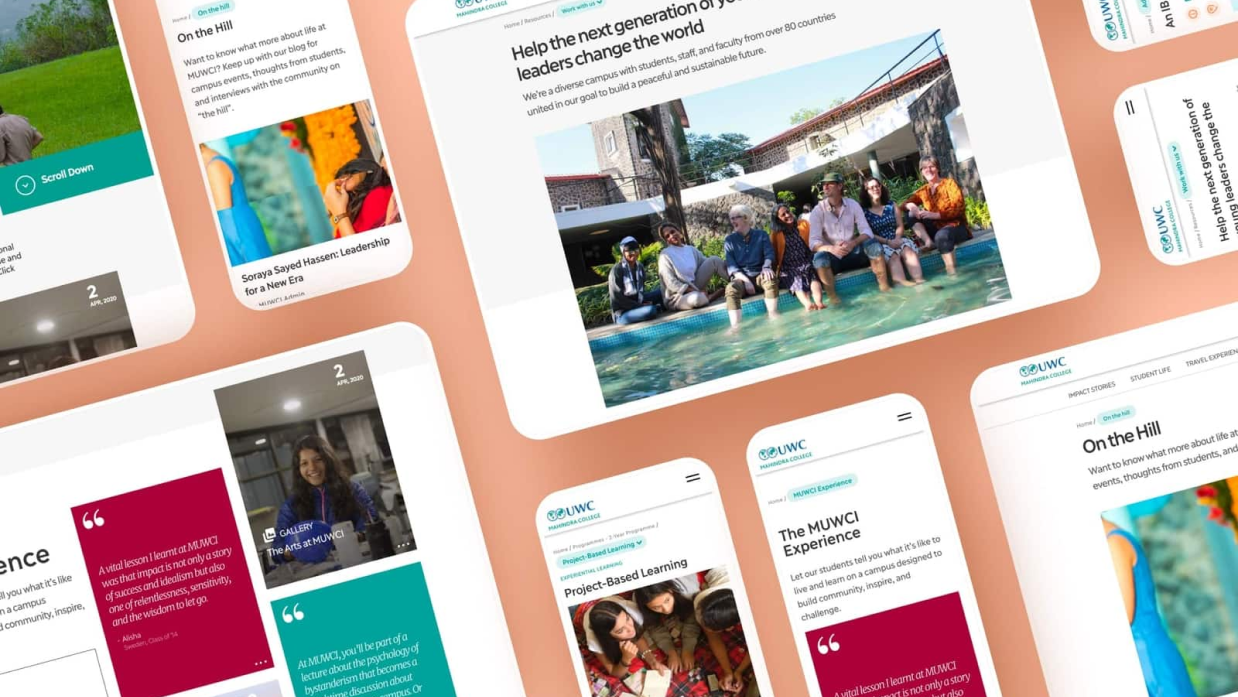
The Outcome
